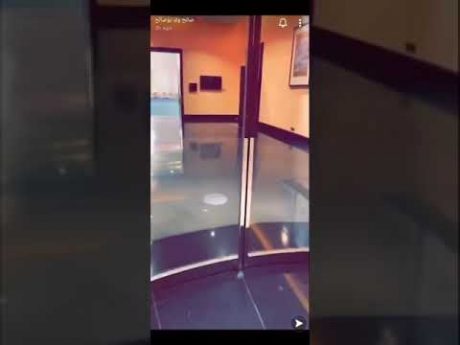Yen tells the global ‘synchronized slowdown’ story
he more crowded the trade, the more wrong punters often tend to be. Case in point: the months-long bet that the Japanese yen would skyrocket.
Hardly, as the herd heads the other way. Bets on a weaker yen just increased for a sixth straight week. And the reasons behind the about-face have relevance far beyond Japanese shores. It’s a signal that the first “synchronized slowdown” the world has seen in a decade is intensifying.
It’s not a global crisis, but a marked downshift with far-reaching implications. While the US dollar is the main safe-haven, the yen also has become a go-to currency in times of stress. Particularly since the dark days of the 2008 “Lehman shock,” investors have piled into yen whenever markets buzz about defaults, hedge-fund blow-ups and credit-market dislocations.
The yen’s haven status, though, comes with a catch. The last 10 years saw a rise of the so-called yen-carry-trade. Punters around the globe borrow cheaply in zero-interest-rate Japan and reinvest the proceeds in higher-yielding assets from New Zealand to Argentina. Any sudden jump in the yen, though, prompts aggressive unwinding moves in markets everywhere.
Only now, the yen is stable to lower amid waning global growth. Yet odd as it might sound, there’s good news in all this gloom. Yes, Europe is walking in place, and China will be lucky to grow 6% this year. The slowdown, though, is a reasonably orderly affair. That stability is aided by a US economy that, while slowing, is largely holding its own, gross domestic product-wise.
For now, at least. Donald Trump remains a major wild card. Even as his negotiators hunker down with Chinese officials, the US president threatens to maintain tariffs on some US$250 billion of mainland goods. It means that even if Washington and Beijing agree on a truce, the trade war is here to stay.
There’s no telling what Trump might do next. He’s long threatened 25% taxes on imports of cars and auto parts. Trump is prodding Japan to start bilateral trade-deal talks. Such considerations and discussions, it’s worth noting, are unfolding amid myriad crises confounding his presidency. The more scandals and investigations raise Trump’s ire, the greater the risk he might lash out at trading partners.
These risks collide with a synchronized global slowdown that investors haven’t yet priced into asset prices. That is indeed where the world finds itself, according to a recent Brookings Institution study. It notes significant deterioration since last fall and recommends that governments mull fresh stimulus options.
A generalized recession isn’t afoot just yet, says economist Eswar Prasad of Brookings. But, he adds, evidence of deceleration is unmistakable and everywhere. He warns of “ominous” demand dynamics and “present constraints” on macroeconomic policies needed to keep growth on an even keel.
That goes for the biggest economy, too. “The US expansion has moderated as fiscal stimulus wears off and growth in indicators such as employment and retail sales weaken,” Prasad says. “Waning business and consumer confidence, along with a yield curve that remains relatively flat despite prospects of large US budget deficits, suggest further weakness ahead.”
By “yield curve,” Prasad is referring to long-term interest rates moving below short-term ones – a scenario that pretends possible recession. America’s is indeed inverted.
At the same time, he says, “muted wage and inflationary pressures have led the Federal Reserve to pull back from its rate tightening plans, with the debate shifting toward possible rate cuts and a halt to the unwinding of the Fed’s balance sheet.”
In a more normal geopolitical environment, this dynamic might be proving the yen bulls right. So might Japan’s current-account surplus, a position of strength that Tokyo has maintained for 56 months now. The roughly $24 billion surplus in February should, in conjunction with the Fed’s dovish turn, propel the yen upward.
It does not speak volumes about the downward trajectory of global growth. The yen is down nearly 3% over the last three months. The increase reflects a more than $70 billion increase in net purchases of bonds and stocks this year through the end of March.
As the yen bulls throw in the towel, they’re really saying that the global economy bears have a point.
اكتشاف المزيد من استشارات اون لاين
اشترك للحصول على أحدث التدوينات المرسلة إلى بريدك الإلكتروني.





